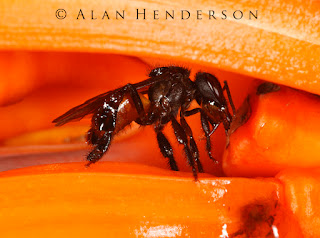We had been told that they are very common, and true to form it didn’t take long to see one. The Terciopelo or Fer-de-lance (Bothrops asper) is one of the most feared snakes in Latin America . They belong to the Viper family and can grow to almost 2.5 metres long. In comparison to our Australian snakes, the Terciopelo has enormous fangs; they can get to 2.5cm long. They are apparently much more aggressive than most other Vipers (such as rattlesnakes), and often won’t hesitate to bite if startled. Apart from their fang length and potent tissue-destructive venom, the locals fear these snakes due to their habits. During the day they shelter beneath shrubs and bushes and remain motionless, using their camouflage to conceal them. In this region of Costa Rica
We hiked across the Rio Tigre (Tigre River










No comments:
Post a Comment